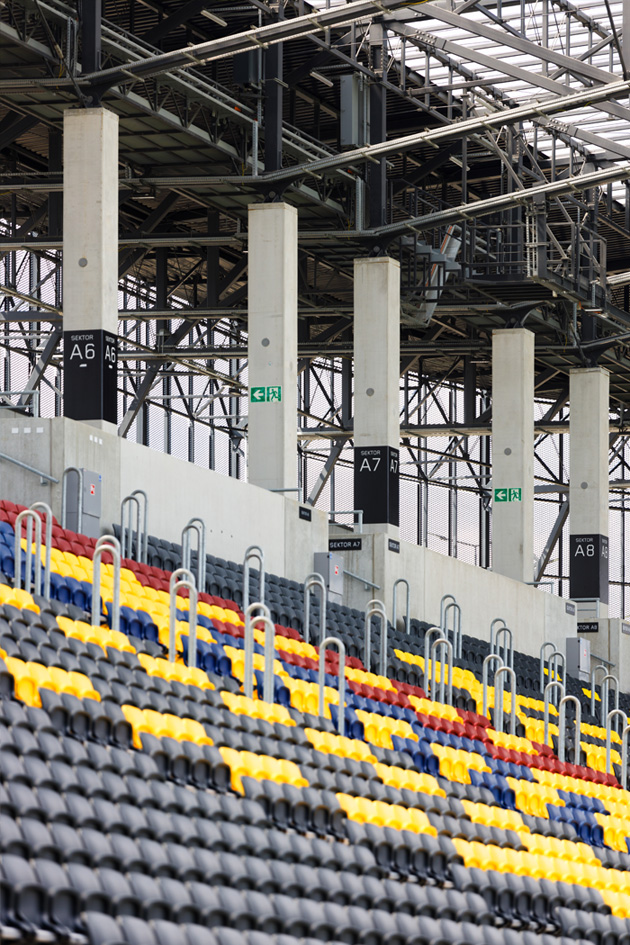During the First World War, a disused gravel pit was converted into a football pitch and this is how the history of the stadium began. After its extension, the stadium was officially opened in 1925. The stadium was located at a natural recess in the shape of an irregular horseshoe, with stands developed on the slopes. The north and south stands were connected by an arched west stand.
At the time, the stadium consisted of a full-size pitch, an athletics track, and stands for around 15,000 spectators. it was used by a German sports club until the Second World War. In 1944, an air defence post was established at the stadium. Rebuilt after wartime destruction, it became the property of the Szczecin-based Pogoń Sports Club in 1955 and served not only as a football stadium but also a light athletics facility.
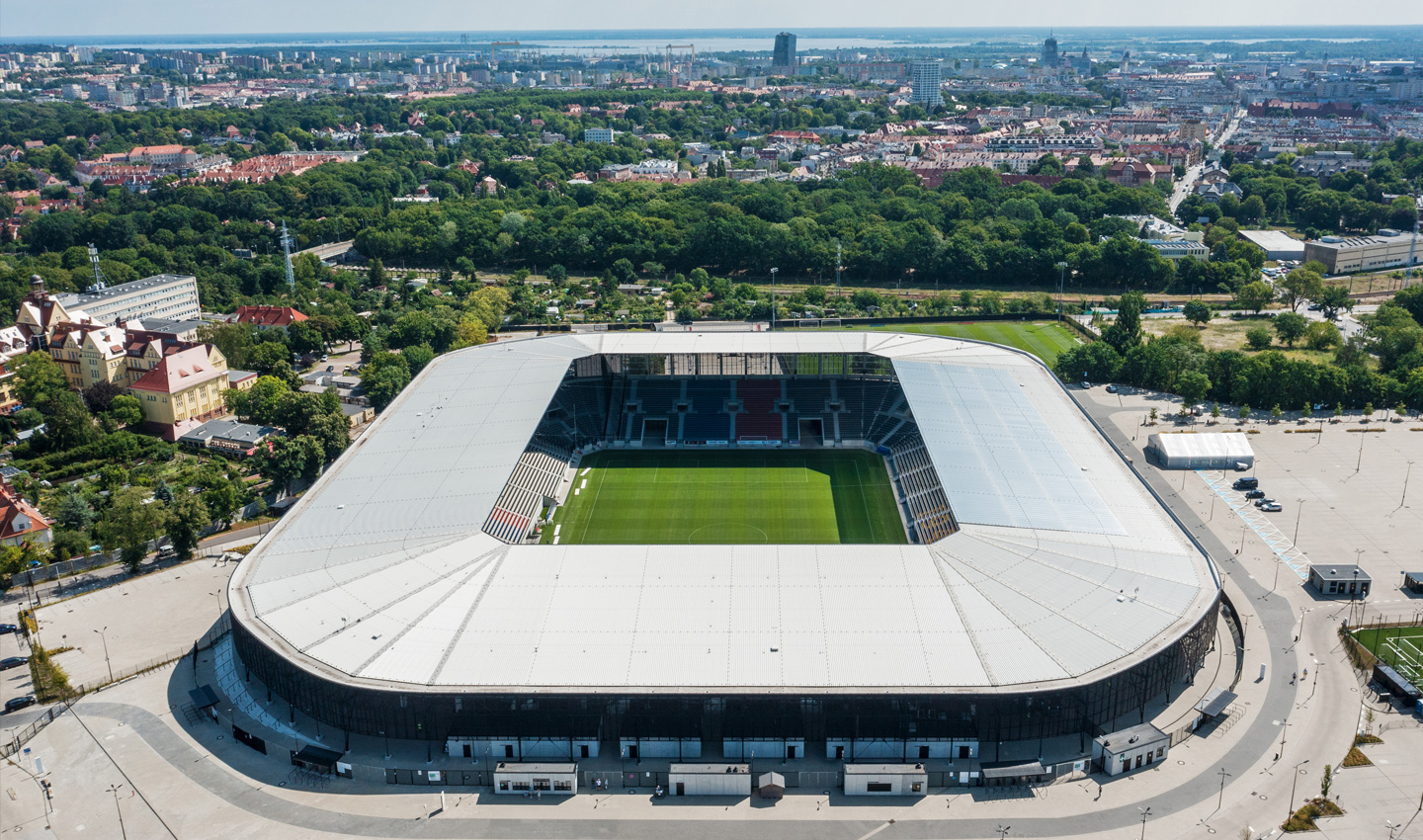
In 1989, the City took over the stadium. Since then, it has been gradually upgraded and rebuilt. In 2018, DEDECO developed the Functional Plan for a new investment project which included the building of a new Children and Youth Training Centre, rebuilding and extending of Florian Krygier Municipal Stadium, as well as developing of football pitches and related infrastructure. The plan supported the tender for a design-build project. The concept design covered redevelopment of the stadium and included a football arena with heated turf and a full-size pitch, surrounded on all four sides by roofed stands with 21,163 seats. The simple and elegant architectural structure has gained a timeless and subdued character.
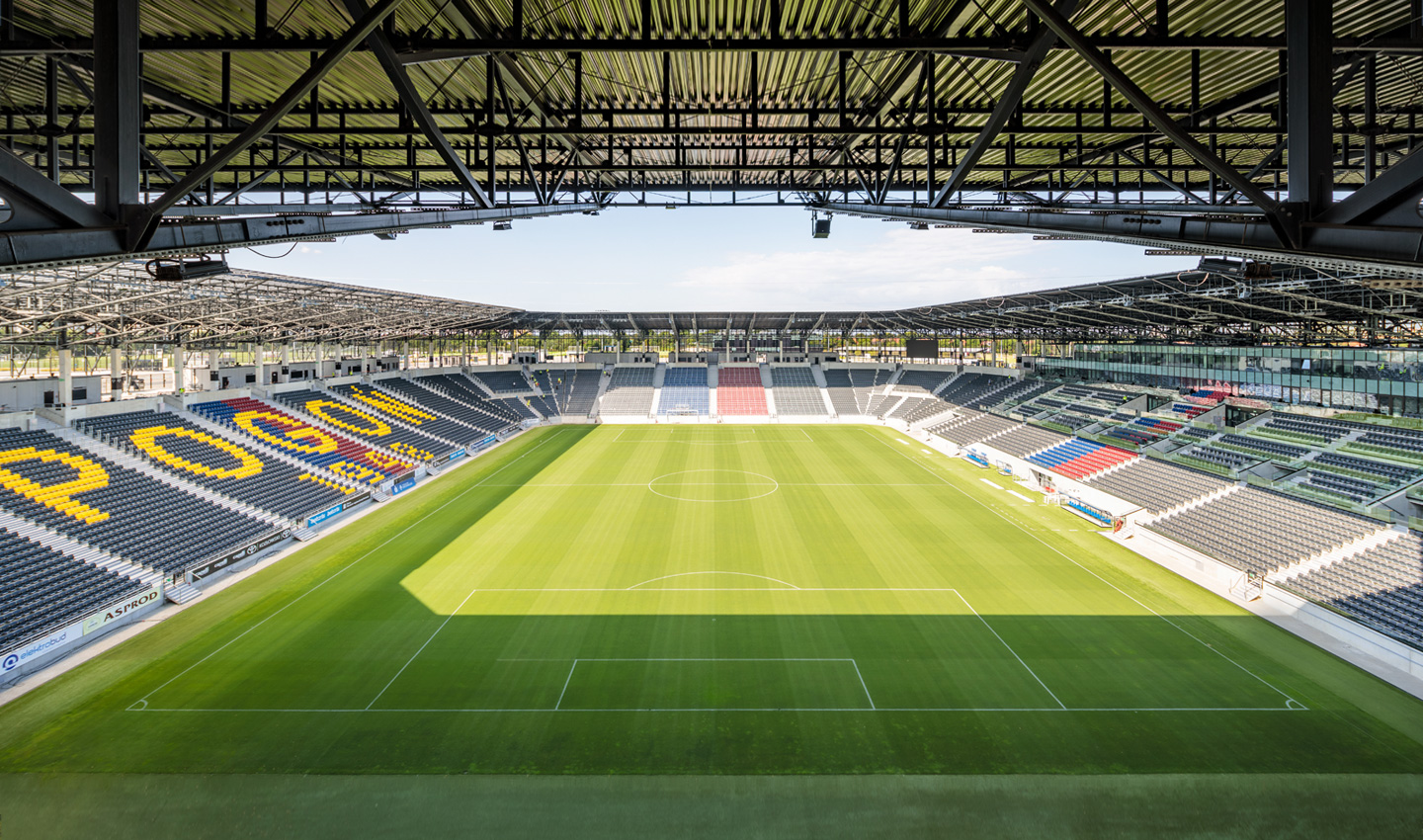
The main building has been built into the north stand, and it contains auxiliary sport and office space, changing rooms and wellness area, VIP lounges with catering facilities, and all other rooms necessary for the organisation of mass events. Underneath the east stand, the structure contains auxiliary functions, such as museum, bistro, and a gift and merchandise shop.

The investment project also includes the Children and Youth Training Centre and practice facilities consisting of five pitches, as well as technical infrastructure, roads, and car parks. The project was to take 36 months to complete. The design work went on in parallel with the construction work and… matches were held on the main pitch throughout the entire period. Despite obstacles, such as the discovery of underground post-German shelters, concrete tunnels in place of the planned stands, unexploded WWII ordnance, Covid-19 pandemic, supply chain disruption and staff shortages caused by the war in Ukraine, the project was completed, handed over, and officially opened with a game that Pogoń Szczecin won on 1 October 2022.
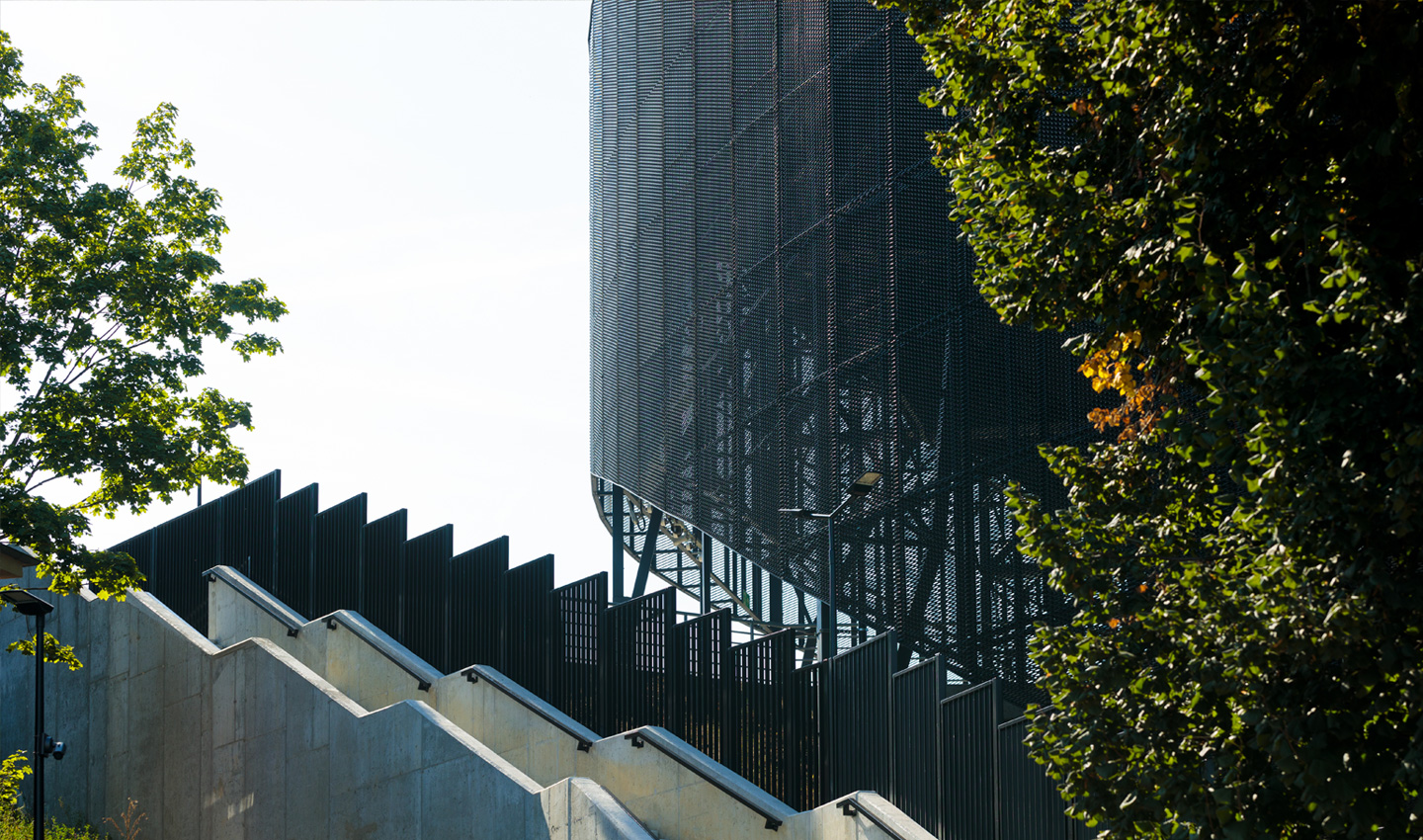
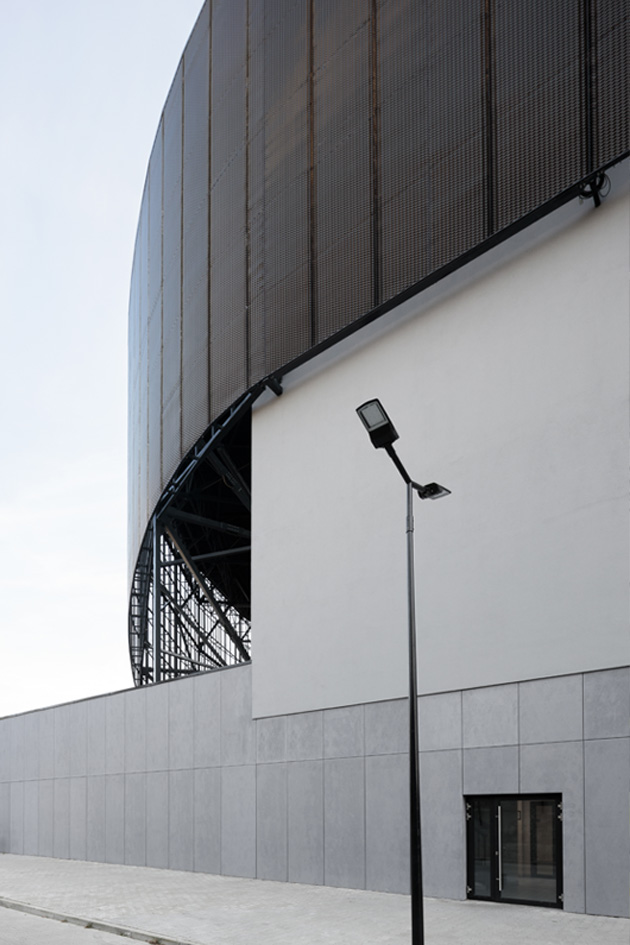
Florian Krygier Stadium, commonly known as the Papricana (combination of Brazilian Maracanã and paprykarz, unique local food product), is now Szczecin’s iconic sports facility and one of the city’s flagship developments. It also came second in the annual ‘Stadium of the Year 2022’ competition, involving similar facilities from all over the world. The Szczecin stadium was ahead of more than 30 other participating stadiums.
